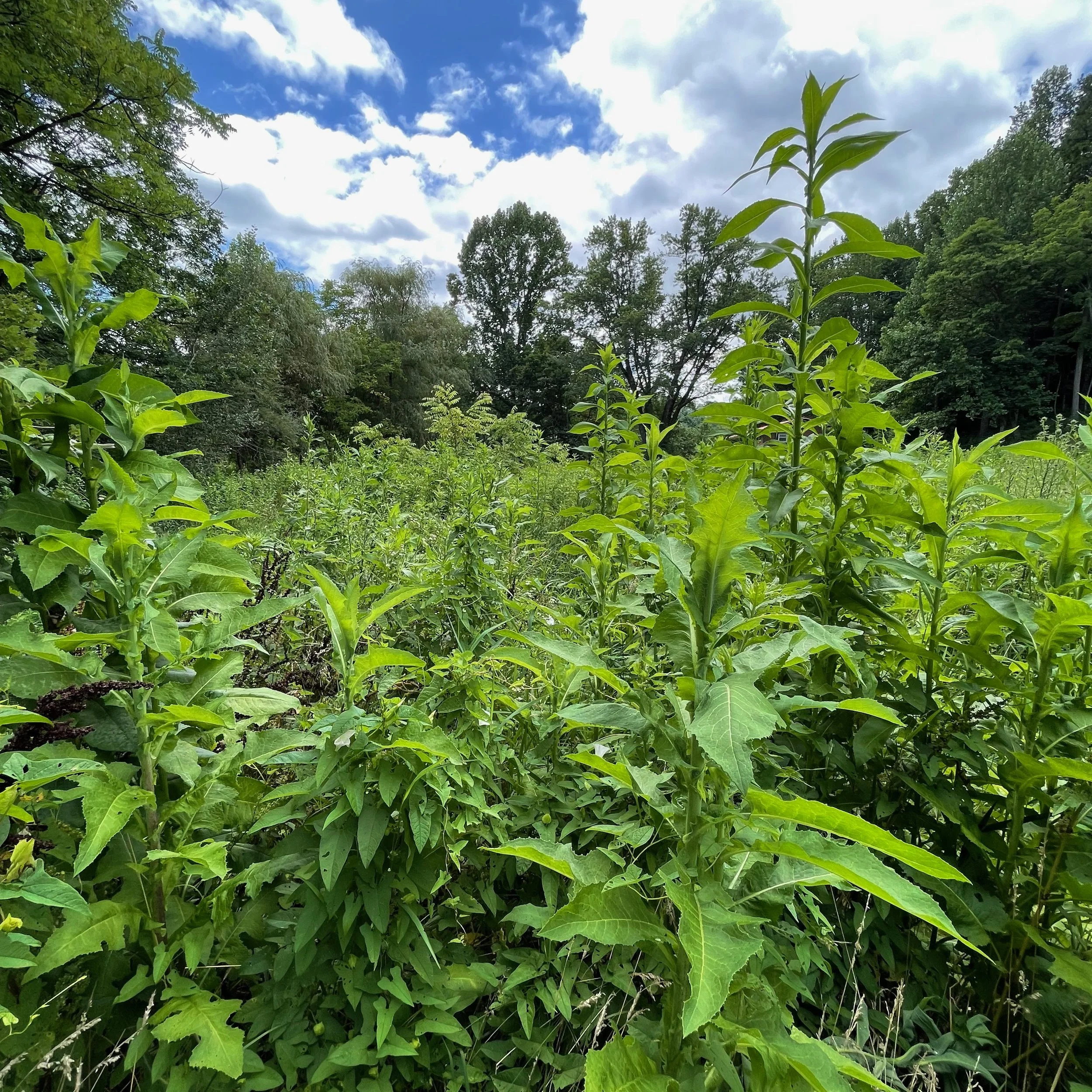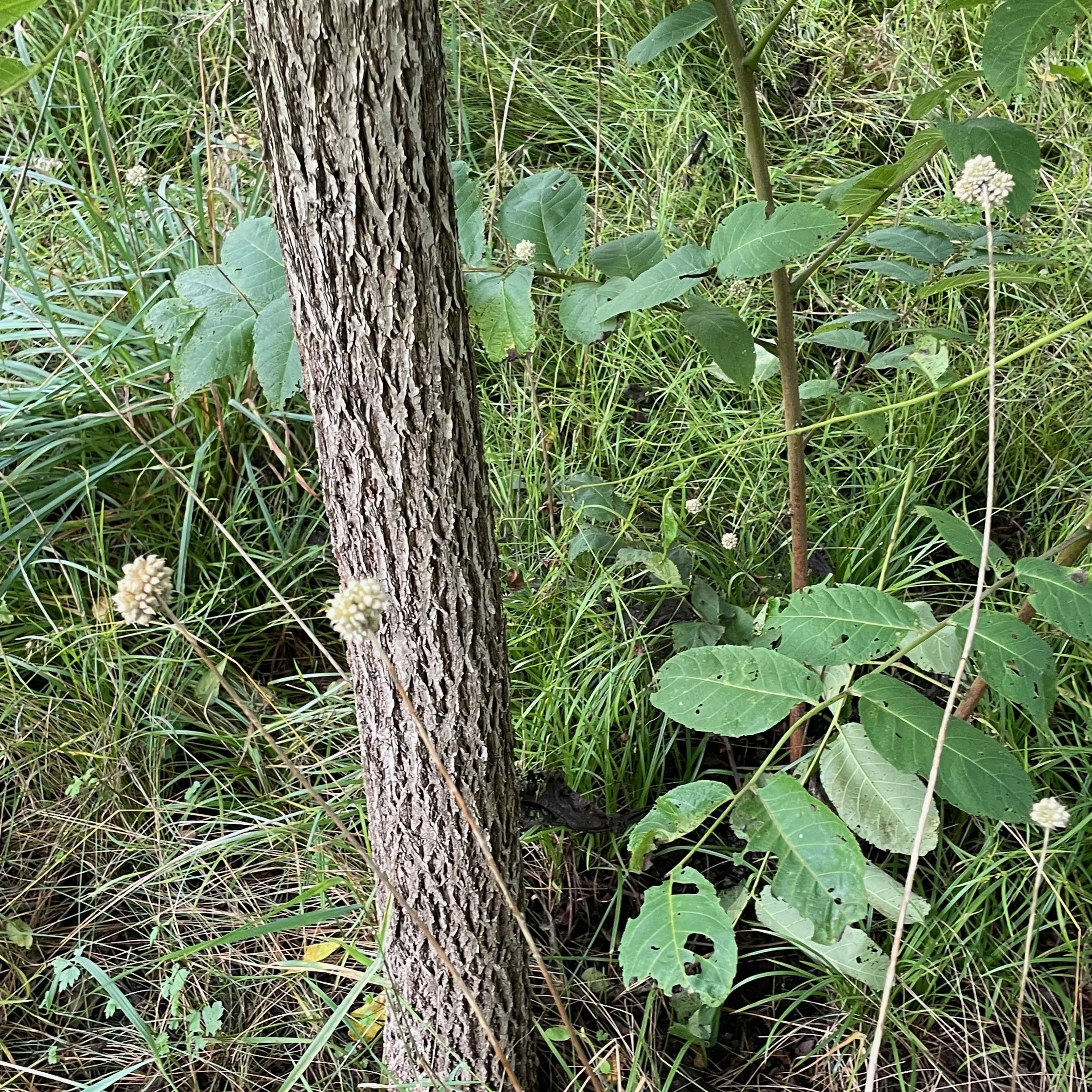Woodland lettuce and wild garlic
Woodland lettuce growing in the meadow
Because of the way winds and water moved the soil around during last September’s Hurricane Helene, what is growing out in the meadow and along the creek banks this summer is different from what was growing there last summer. The flooded creek spewed river rocks and silty soil up into the meadow, covering over much of the plant life that had been there before. Whole chunks of creek bank dropped into the stream, increasing the sediment in the water. I might not have even noticed the changes in the plant life if I had not spent so much time in the fields and woods last year, beginning to really see what was there. I know this land now in a way that I had not before. And that is why I am here. To know and be a part of this land.
The most dramatic difference between the meadow last year and this is this year’s overabundance of tall, hollow, bright green woodland lettuce (Lactuca floridana) stalks that ooze a sticky, milky white substance when broken. The tallest ones are over 10 feet high, and to be among a tight stand of a dozen or more feels intimidating. Woodland lettuce is native to North America, and it is found in newly disturbed soil, like these fields washed over last month by rocks and flood waters. As much as I appreciate the benefits of native species, particularly the way they attract native bees and butterflies, I am confronted with the need to remove this invasive native species, lest it take over every other plant in its wake.
I hoped it would be one of its non-native sister species, like tall blue lettuce (Lactuca biennis) or wild lettuce (Lactuca virosa) so I will feel less badly about removing it, but after consulting several sources and spending time in its overwhelming presence, I am convinced of my need to uproot as much of it as I can. Even the biggest ones are relatively easily pulled out of the ground. I am amazed at the sheer volume of physical matter that they have grown into since spring. How can so much of something come from seemingly nothing? I know it didn’t come from nothing, but leaves me in awe.
Wild garlic, allium vineale
As these thick stalks come out of the ground, the plants around them seem to breathe a sigh of relief. More room for the native milkweed that has been growing in the meadow unbidden, and the young mulberry tree I planted recently. In the area under young black walnut trees where we removed maybe 60 stalks of woodland lettuce, my heart lightened a bit as I found a lovely new plant whose view had been obscured by the lettuce. These had thin stems with a white-segmented ball perched on top, the weight of it bending the stem a bit. The further I looked, the more of them I saw, so soft and delicate, spreading through the understory. Such a contrast to the verdant, massive stalks of lettuce. I identified them as wild garlic.
There are two plants known as wild garlic, however. One is allium ursinum, non-native, apparently loved by cows and bears, but not described as invasive. Judging from photos of both plants, however, the wild garlic in this field are definitely the other species, allium vineale, both non-native and invasive. But here they are; they don’t seem to be invasive. I see them only under the black walnut, tiny forest ornaments. It feels like the right thing to do is let this wild garlic stay for a bit. I’ll be back to visit them and see where they go.
— o—
As much as I’d like simple answers about how to tend this land, I like it more that I am getting to know it better. I love it that it holds mysteries and surprises. I look forward to continuing to watch it and listen to it and to take in the pleasures of it as I am able.

